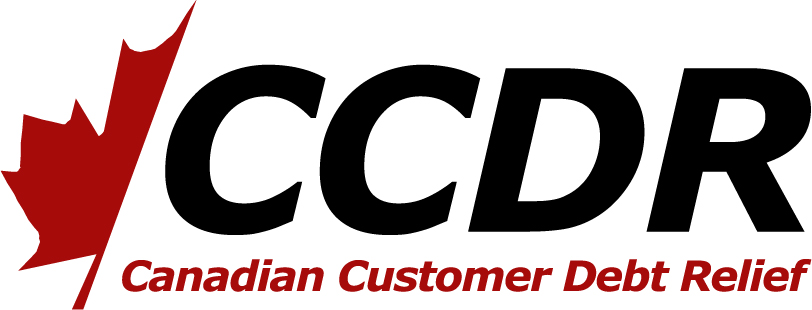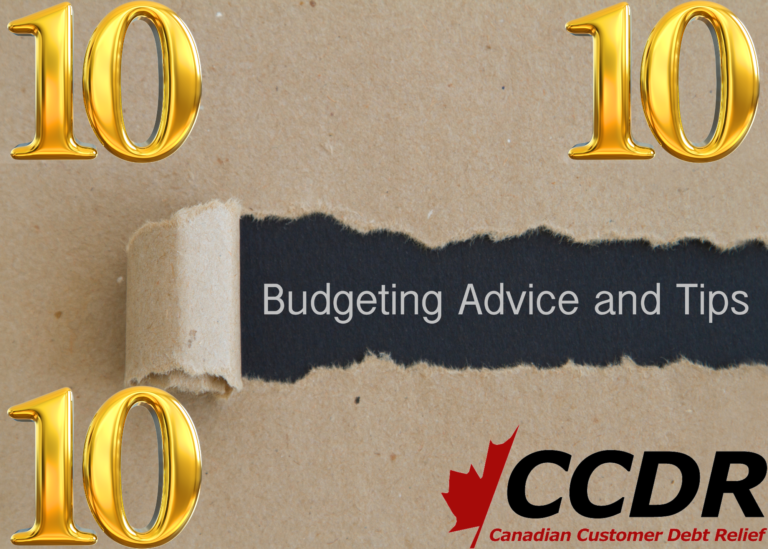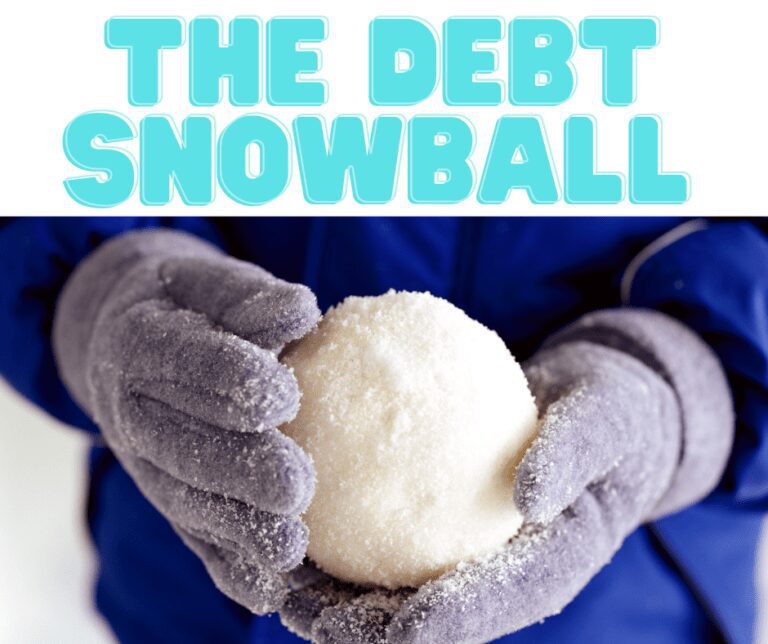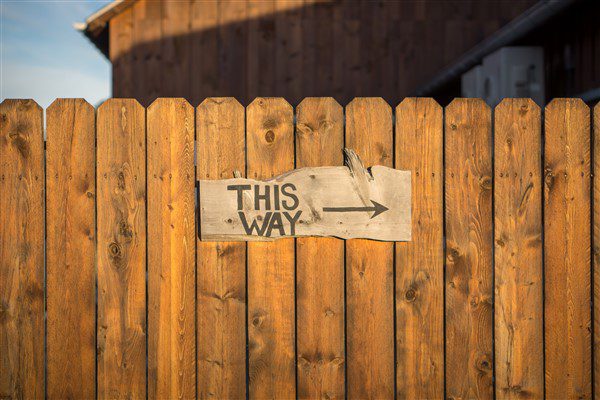Consolidation
10 Tips for Maintaining a Healthy Budget at Home
Maintaining a healthy budget at home has become more critical today, where everything seems to be getting expensive daily. As a result, we have to be more mindful of our finances and keep our expenses in check. This article will provide ten practical tips for maintaining a healthy budget at home.
Create a budget plan
Creating a budget plan is the first step in maintaining a healthy home budget. This will help you keep track of your expenses and identify areas where you can cut down your costs. Next, list your monthly income and expenses, including your bills, groceries, and other miscellaneous costs.
Cut down on unnecessary expenses
Once you have created your budget plan, it’s time to cut down on unnecessary expenses. This includes dining out, buying clothes you don’t need, and subscription services you rarely use. Instead, focus on spending on essential items and prioritize your expenses accordingly.
Plan your meals in advance
Planning your meals can help you save significant money. For example, list the groceries you need for the week and avoid impulse purchases. Additionally, you can opt for budget-friendly meals and make use of leftovers.
Avoid unnecessary debt
Avoid taking on unnecessary debt and always pay your bills on time. This will help you avoid late fees and penalties, which can add up to a significant amount over time. In addition, if you have existing debt, pay it off as soon as possible to avoid accruing additional interest charges.
Reduce energy consumption
Reducing your energy consumption can help you save significant money on your utility bills. You can do this by turning off lights and appliances when not in use, using energy-efficient light bulbs, and reducing water usage.
Consider refinancing your mortgage
If you have a mortgage, consider refinancing it to a lower interest rate. This can help you save on monthly mortgage payments and free up extra cash for other expenses.
Find ways to earn extra income
Finding ways to earn extra income can also help you maintain a healthy budget at home. For example, you can take on a part-time or freelancing job, sell unwanted items online, or offer your skills and services to others.
Use coupons and discount codes
Using coupons and discount codes can help you save money on your purchases. Look for online deals and coupon codes before purchasing, and take advantage of sales and promotional offers.
Invest in home maintenance
Investing in home maintenance can help you avoid costly repairs and replacements in the future. Regularly cleaning and maintaining your home appliances and systems can also help you save money on your utility bills.
Set financial goals
Finally, setting financial goals can help you stay motivated and focused on maintaining a healthy budget at home. Whether saving for a vacation or paying off debt, having a clear plan can help you prioritize your expenses and make smart financial decisions.
In conclusion, maintaining a healthy budget at home requires discipline, planning, and intelligent financial decisions. By following these tips, you can reduce your expenses, avoid unnecessary debt, and save money for the future.
The Debt Snowball Method
The debt snowball method is a popular strategy for paying off credit card debt and other forms of consumer debt. The basic idea behind the debt snowball method is to pay off your debts in order of smallest to largest, regardless of the interest rate. The theory is that by paying off the smallest debts first, you will be able to quickly see progress and gain momentum, which will help you stay motivated to continue paying off your debts.
Here is how you can accomplish the debt snowball method:
- List all of your debts: Make a list of all of your debts, including the creditor, the balance, and the minimum payment.
- Order the debts by balance: Arrange your debts by balance, starting with the smallest and working your way up to the largest.
- Make minimum payments: Make the minimum payment on all of your debts except for the one with the smallest balance.
- Attack the smallest debt: Apply as much extra money as possible towards the debt with the smallest balance. For example, if the minimum payment is $50 and you can afford to pay $100, apply the extra $50 towards that debt.
- Repeat the process: Once you have paid off the debt with the smallest balance, take the extra money that you were applying to that debt and apply it to the next smallest debt, and so on. As you pay off each debt, you will be freeing up more money to put towards the remaining debts, allowing you to make larger payments and pay them off faster.
- Track your progress: Keep track of your progress as you pay off each debt, and celebrate your wins along the way. This will give you motivation to keep going and stay committed to the process.
An important thing to keep in mind is that the debt snowball method will not necessarily save you the most money in interest charges, because it doesn’t focus on paying the high-interest debt first. However, the psychological benefit of seeing small debts being paid off may help you stay on track, and the small wins will give you motivation to pay off larger debts as well.
It is important to note that if you have any trouble with paying the minimum payments or you see that it will take you a very long time to pay off your debts, you may want to consider reaching out to a debt relief company like ccdr.ca that can help you come up with a personalized plan to repay your debts and potentially even reduce the amount you owe.
Staying out of Debt in Canada
Staying out of debt in Canada can be difficult. The credit card companies and other lenders have made it all too easy to get into the red. You may think that it is impossible to get ahead while avoiding debt traps, but there are ways to do so.
Get a copy of your credit report and make sure it is accurate.
- Get a copy of your credit report. Click Here
- Check for errors and make sure the information is correct. If it’s not, contact the credit reporting agency to get it fixed.
Keep track of your spending.
- Keep track of your spending.
- Know what you’re spending and where you are spending it.
- Use a spreadsheet or budgeting software to keep track of all your expenses, especially those that are recurring (such as rent).
- Place receipts in a folder for easy reference later on if the need arises, such as an audit or tax season.
Set up a budget and stick to it
The first step to staying out of debt is to set up a budget. A budget is a plan for your money, which will help you keep track of where it’s going and get an idea of how much money you have left over at the end of the month. You can use online tools like Mint.com or Quicken.com to create your own personal budgets, or download them from the Internet for free in Excel format.
Once you’ve created a budget and added all your expenses into it, stick to it! Instead of buying things on impulse, put aside some cash each week so that when payday comes around again (after all bills are paid), there’ll be enough left over for some fun stuff without having to borrow or charge more than planned for until next pay cheque rolls around again.”
Pay down your debts. It will build your credit rating and relieve stress.
The most important thing to do when you’re in debt is to get out of it as quickly as possible. You can do this by paying off the smallest debt first and then working on the next one. If you have multiple debts, try to pay more than the minimum payment each month so that your debts are paid off faster and you have less interest charged on them.
If your credit score is an issue for getting a mortgage or home equity line of credit, it might be worth paying off some of your smaller debts before making any large purchases like a car or house. This will not only improve your credit rating but also save money in interest charges over time. However, don’t use credit cards to pay off other credit cards because this will just lead to more debt!
Consolidate all your debt into one loan with a lower interest rate, if possible.
Consolidate all your debt into one loan with a lower interest rate, if possible.
This is the best way to get out of debt quickly and easily. Consolidating your debts means taking all of your different debts, like credit card bills and car loans, and combining them into one new loan. You’ll have one monthly payment instead of several smaller ones that are spread out over time, making it easier to budget each month. If you can consolidate all the debts into a lower-interest rate loan (usually from three percent to six percent), then this is what you should do first before doing anything else.
To find out whether or not consolidating will save you money on interest payments, go online and run some numbers for yourself using an online calculator like this one: Loan Calculator
If you have bad credit, consider a secured credit card to help rebuild your credit rating.
A secured credit card can help you rebuild your credit rating if you have bad or no credit history. You will apply for a secured card and make a deposit, which becomes your credit limit. The amount you deposit determines your interest rate and whether or not you will be approved for the card. If approved, payments are deposited directly into an account that is held by the bank until it’s paid off in full, so there are no surprises with interest or fees at renewal time.
Pros: A secure card can help establish a track record of paying bills on time and show lenders that they should consider offering regular unsecured loans in future when they see how capable YOU are at managing money responsibly.
Cons: Secured cards have higher than average interest rates compared to unsecured ones due to their riskier nature; however this may be justified if using them allows consumers access to more affordable loans down the road (especially those with low incomes). Get a Secured Credit Card
Applying for new credit cards may lower your rating, so stick with what you have.
Applying for new credit cards can lower your credit rating, so it’s best not to apply for one if you already have a lot of debt. If you do decide to apply, make sure that you are able to pay off whatever balance is on the card before the interest kicks in.
You should also keep in mind that while they can be useful tools, they can also be dangerous if misused. If you have no reason at all (like paying off medical bills or tuition), then it would probably be best not to get one right now. The same thing goes with borrowing money through a payday loan company : if there’s no need for such an expense then don’t take out a loan!
Get help from an accredited debt help agency like Canadian Customer Debt Relief. Their counsellors are trained to help you find the best solution for you, no matter where you live in Canada.
CCDR can help:
- Understand your current financial situation
- Figure out how much money is coming in and going out each month
- Understand which debts are causing problems for you (credit cards? student loans? car payments?)
- Create a plan that lets you pay off all or some of your debts over time
Conclusion
Debt can be a burden that holds you back from the life you want. It can also lead to stress and anxiety. The good news is that there are steps you can take to get out of debt and start saving money for the things you really want.
Avoiding Payday Loans In Canada
Payday loans are a source of quick cash that many Canadians use to get through the month. They can be convenient when you need money, but they also come with high interest rates and fees which make it hard to pay off your debt if you take one out. If you’re considering getting involved in a payday loan, here are some things you should know before making that decision:
Make Payment Arrangements With Your Creditors
When you’re faced with a problem, the first thing to do is look at your options. If you don’t have cash to pay your bills, consider working out a payment plan with your creditors.
Get on their good side by paying any interest that is due (but not yet late), and any fees, late fees or collection fees that are due but not yet charged. This could help them see you as reliable enough to extend more lenient terms when it comes time for another loan in the future (or who knows—maybe they’ll forget about this one altogether).
If you still can’t afford a loan payment after all of that, it may be time to contact a payday lender as an absolute last resort.
Use Your Tax Return To Pay Down Your Debt
- Use your tax return to pay down your debt
The first thing you should do is use your tax return to pay down your debt. As a general rule, we recommend that you do this on the highest interest rate loan first (i.e., the one with the most expensive interest rate). This way, you’re able to save money in interest charges and payments and are able to get out of debt faster!
- Get a loan from a friend or family member
If using your tax return doesn’t work for some reason, consider getting a loan from friends or family members at an interest rate that isn’t as high as payday loans but still gives them some income for helping you out. We recommend checking with them first before going anywhere else because they may be willing to lend money without charging any fees at all! You can also try asking around through social media if anyone has any extra cash lying around instead of taking out an expensive loan just yet.
- Use A Credit Card To Pay Down Your Debt
If you can’t get a loan from friends or family members, try using your credit card to pay down your debt. This may be the only option left for some people who don’t want to take out an expensive loan just yet because they don’t have any other way of paying it back before their next payday comes around.
There are a lot of things you can do to keep from getting involved in a payday loan.
If you’re thinking about getting a payday loan, then there are some things you should know about them. First of all, if your friend asks for money and tells you that they will pay it back next week with their paycheck, don’t lend them any cash. This is what most people do by mistake when using payday loans because they think they’ll be able to pay it back after receiving their next paycheck. The problem is that these loans usually have very high interest rates attached to them which means that the amount due will keep growing every month until it becomes unbearable and/or impossible to pay off without taking out another loan or selling something valuable (like your car).
Instead of borrowing money from friends or family members who may not be able to afford giving out cash right now (and who would rather see other people succeed), ask for help from a professional financial advisor at www.ccdr.ca who specializes in helping people with debt problems like yours!
5 Facts You Must Know When Applying For a Loan
APPLYING FOR A SECURED LOAN WITH BAD CREDIT
Having bad credit history can be like carrying a backpack full of worries. You don’t only have to face the elevated rates on credit cards and loans, but acquiring any type of credit can seem like an unbearable obstacle to overcome. Some people with bad credit think that all odds are against them when trying to apply for credit or loans. However, there are those who are willing to take the plunge in risky waters for you provided that you pay them back in the end. Secured loans use an item of monetary value as a safe keep known as collateral. The information that follows has reference to requesting a secured loan with w/unfavorable credit.
SECURED LOANS
Secured loans use personal property to secure the repayment of a loan. This means that the possibilities of getting a secured loan with bad credit are much higher than an unsecured loan. Their characteristics are that of being much more common and have lower interest rates. The interest rate that accompanies a secured loan depends on the value of the collateral being used and its´ place in the stock exchange should the lender have to sell it.
COLLATERAL
A kaleidoscope of items can be used as collateral for a secured loan. But those that have a higher monetary value than the loan amount itself tend to be the best collateral. Some items that are purchased with loans serve as their own collateral as in the case with a mortgage and automotive loans. Nonmaterial collateral such as capital built up in real estate often fulfills the duties for better collateral for a secured loan than any other item.
SHOPPING FOR A LOAN
It’s just as important to look around for a secured loan as it is to get a second opinion from a doctor. When shopping around for a secured loan, the following suggestions should never be overlooked. *Take the time to investigate different banks, finance companies, and lenders in your area who offer the best interest rates or loans. *Online lenders which can often feature better interest rates *Once you have all the information, make comparisons to see which loan suits you the best.
APPLYING FOR YOUR LOAN
Once you’ve found your loan, the application must be submitted. Even though a great-looking shoe doesn’t always secure a perfect fit, it’s essential to have other proposals at hand. If all fails and you still haven’t found your match, it may be time to expand your horizons & undertake other options to facilitate the quest for the best loan that suits your needs.




